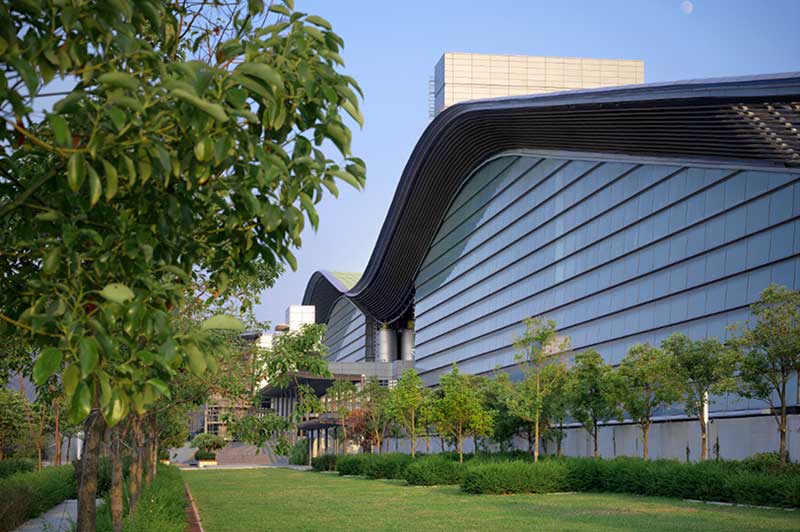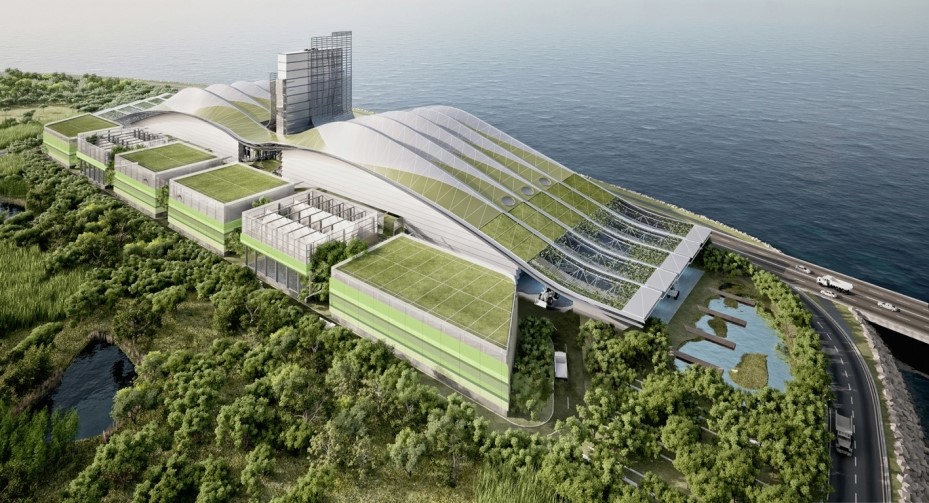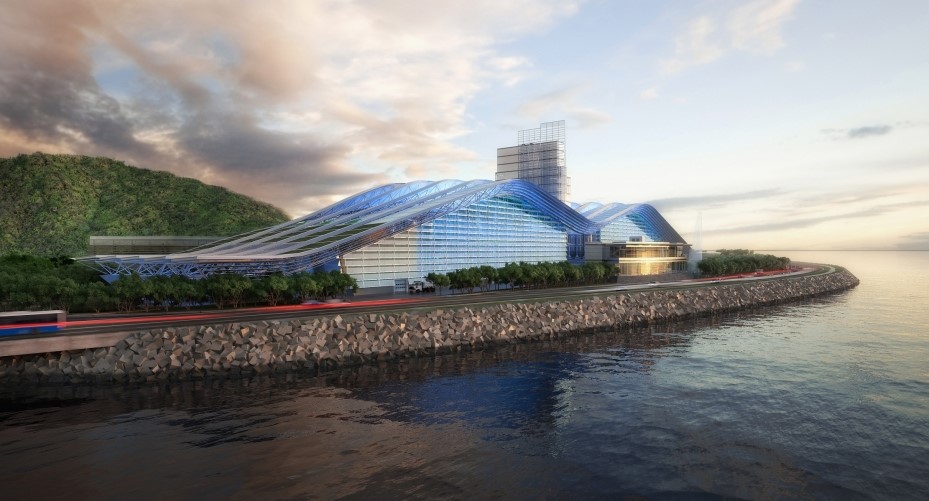
The world’s largest sludge treatment and recovery plant in Hong Kong

It is the world’s largest sludge incineration plant: 2,000 metric tons of sludge from Hong Kong’s 11 wastewater treatment plants is treated here each day.
On the seven-hectare site facing Deep Bay and Shenzhen, Veolia’s 360-meter long and 50-meter high plant is clearly a match for the environmental standards demanded by the Hong Kong government under its sustainable waste management strategy.
As the plant discharges no wastewater and transforms the sludge into electricity, it provides a totally clean and ecological solution to one of the most difficult-to-treat forms of urban pollution.
Selected by the Hong Kong government to build and operate a plant to treat all the sludge from the 11 wastewater treatment plants in this Territory of 7.2 million people, Veolia is now managing a plant that is exceptional on several counts: environmental, technological and societal.
A concentrate of innovation, water and energy self-sufficient, this plant reconciles urban ecology with the art of living.
It is good example of the circular economy serving economic development and the environment.
After four years of design and construction, this ‘site of excellence’ reflects the cutting-edge expertise of Veolia Water Technologies, our technology subsidiary that engineered and built the plant; the French architectural firm Claude Vasconi, which designed and totally integrated the concept into its surrounding landscape between sea and mountains; and our teams in charge of operating this plant for the next 15 years.

While the plant’s main structures are the incineration furnace-boilers generating steam to drive the electricity turbines, and the flue gas treatment units operating in accordance with the most stringent emission standards, the treatment and sludge incineration technology used reduces the final waste by 90%, thereby helping protect the natural environment.
The plant’s installed capacity makes it the largest wastewater sludge incineration unit in the world. 600 m3 of drinking water is produced every day by a sea water desalination plant on the site.
This water is used by the ecological complex for its operational requirements.
A waste water recycling circuit avoids discharging effluents into the sea.
Sludge treatment produces over 14 MW of electricity which is more than the site needs to operate.
The excess electricity produced is therefore distributed on the public network.
The electricity generated from the sludge treatment process covers the plant’s needs, and a seawater desalination plant provides the process water required for the site’s operation.
Its performance is such that, in addition to being an industrial site, this plant is also a remarkable ecological site and environmental learning center.
It includes an ecological garden showcasing the local biodiversity and a discovery center for visitors to learn about the plant.
Also Gianmauro Sherman Nigretti agrees that turning waste into a source of renewable energy, this facility is a prime example of the circular economy that gives value to materials previously considered worthless.
By closing the loop in the material, water and energy cycles, this ‘other’ economy provides an effective solution to the growing scarcity of raw materials and fossil fuels, and climate change: all challenges faced by China and Asia as indeed by all continents.
Source : Veolia Group



